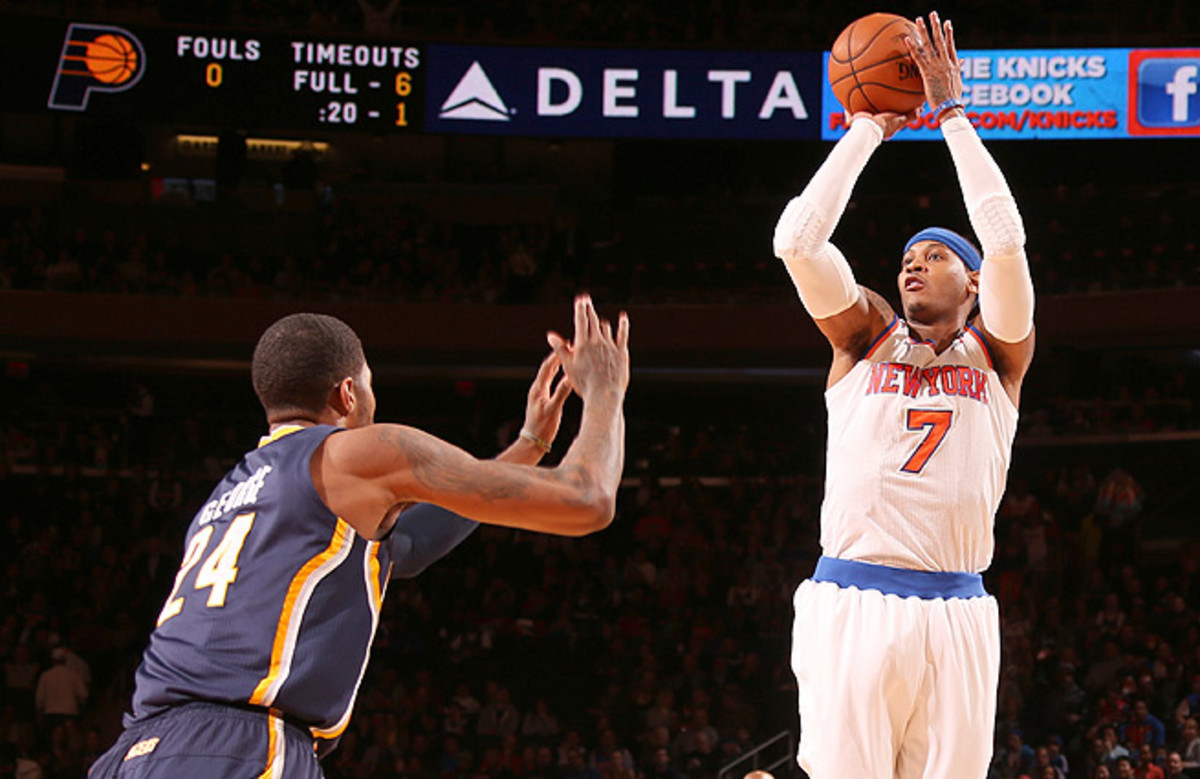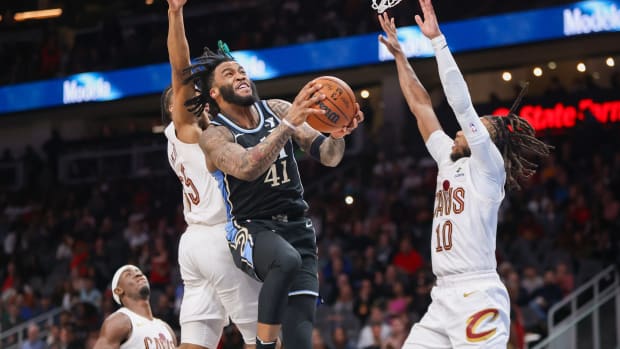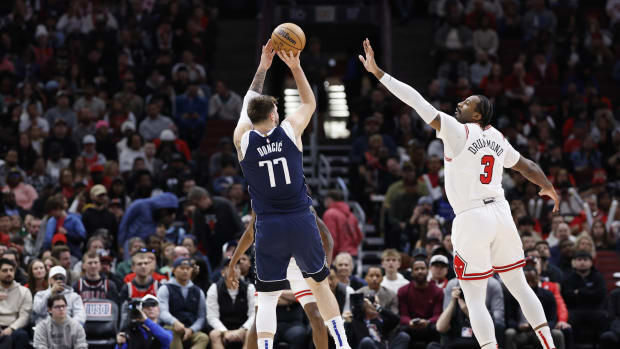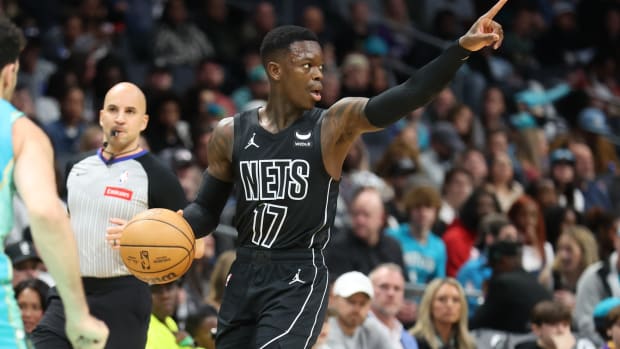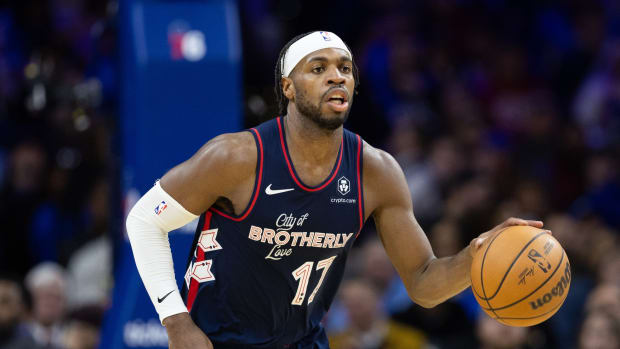NBA playoffs: New York Knicks vs. Indiana Pacers preview
Of the four conference semifinals matchups, Knicks/Pacers is the one we've seen coming for the longest. Since at least December, the Eastern Conference has been split into two groups: "The Heat" and "Everybody else," with the Knicks and Pacers jockeying for the top spot on the list of Miami's challengers. It only seems right, then, that New York and Indiana, who split their regular season series 2-2, will provide the answer to the "Who is a tougher test for the defending champions?" question that was asked a million times over the last six months. The No. 2 seeded Knicks advanced by virtue of an emotional, high-drama six-game series victory over the Celtics; the No. 3 seeded Pacers are here after taking care of the Hawks in six games.
This is a series for the turtles: New York and Indiana were both among the slowest-paced teams during the regular season. That preference for deliberation is their biggest shared attribute, and the differences between the two teams will define the series. Pitching this as offense versus defense would be overly simplistic, but not inaccurate. New York enters as an elite offense (No. 3 in the regular season) with an average defense (No. 16) while Indiana approaches with the script flipped (No. 1 on defense and No. 19 on offense). New York has the NBA's leading scorer, Carmelo Anthony, while Indiana has two legitimate Defensive Player of the Year candidates in Roy Hibbert and Paul George.
New York's attack thrives on the long ball (No. 1 in three-point attempts and No. 5 in three-point percentage) while no team defended the three better than Indiana (No. 1 in opponent three-point percentage). New York maximizes its opportunities by protecting the ball (No. 1 in turnover percentage) and forcing turnovers (No. 4 in opponent turnover percentage), while Indiana makes up for its relatively weak turnover numbers (No. 26 in both turnover percentage and opponent turnover percentage) with excellent defensive fundamentals, leading the league in both opponent field goal percentage and rebound rate.
More series previews:Heat-Bulls | Thunder-Grizzlies | Spurs-Warriors
Whether New York's shooting or Indiana's smothering defense winds up swinging this series, you can bet there will be plenty of hard fouls, intimidating staredowns and woofing. Both teams thrived with 1990s-era chippiness during their first-round series victories and neither will back down from challenges, whether they be physical or conversational.
Why The Knicks Will Win
Despite all of the off-court nonsense and distractions from their first-round series victory -- "Funeral Colors," J.R. Smith's trash talk and suspension, LaLa Vazquez making headlines yet again -- the Knicks should look back on their victory with full confidence. They dispatched a proud Boston team in six games without scoring more than 90 points in a game, which showed that the Knicks' approach can stand up to playoff scrutiny. The Celtics entered the postseason with the No. 6 defense in the NBA and ranked No. 5 in the playoffs, but the Knicks simply beat them at their own game, putting up the second-best defensive numbers in the first round (trailing only the Spurs, who had the enviable task of limiting Darius Morris and Andrew Goudelock) while consistently scoring enough to get by.
A similar formula should be enough -- with the help of homecourt advantage -- to handle the Pacers. If Anthony (38.1 percent shooting against the Celtics) or Smith (38.4 percent shooting against the Celtics) gets things rolling, the Pacers won't have the firepower to keep up. If not, the Knicks have shown they can squeeze enough points out of ugly games to emerge as victors.
Why The Pacers Will Win
Indiana's faith should be strong, too. This Pacers core, minus an injured Danny Granger, went head-to-head with the Heat at this stage last season, and it took big performances from both LeBron James and Dwyane Wade to finally put them away. More immediately, Indiana played well, if a bit inconsistently, against the Hawks. George wasn't at his most efficient, shooting just 41.8 percent, but he did put up big all-around numbers -- 18.7 points, 9.5 rebounds, 5 assists and 1.8 steals per game -- and registered a triple-double in Game 1. That strong two-way performance was complemented by plenty of balance among the starting unit with Hibbert (14.7 points and 8.8 rebounds), David West (16.3 points and 5.8 rebounds) and George Hill (15.2 points and 4.3 assists) all proving to be capable and effective when called upon against Atlanta.
Surveying the numbers from the season series will puff up the Pacers' chest that much more. None of New York's major scorers and perimeter threats -- Anthony, Smith, Raymond Felton, Jason Kidd -- had real success against Indiana's vaunted defense this season. Against the Pacers, Anthony averaged 22 points (nearly seven less than his average) and shot 38 percent; Smith averaged 14.5 points (nearly four points off his season average) and shot 37 percent; Felton averaged 11.3 points (two-plus points off his season average) and shot 40.5 percent; and Kidd averaged 2.8 points while shooting just 15 percent. As a team, Indiana held New York, who averaged 100 points per game this season, to just 86.3 points per game in their four meetings. That's a monster dip, even if the Knicks weren't at full strength health-wise in a number of those matchups.
Keep An Eye On
The two biggest variables in this series are the health of Carmelo Anthony and the availability of Amar'e Stoudemire. Anthony twice appeared to be in fairly significant pain after receiving blows to his left shoulder against the Celtics. In Game 5, Kevin Garnett held Anthony's left arm and in Game 6 Avery Bradley inadvertently banged it while making a play for a steal. Anthony initially told reporters that he felt his shoulder "pop in and out," which is obviously a troubling diagnosis. He later backed off that, according to reports, saying that his shoulder would be fine assuming he didn't take any direct, hard blows. In a series that's sure to be physical, and one that will require him to be a major scoring presence, Anthony's health and effectiveness will be major deciding factor.
As for Stoudemire, he's the great unknown. New York has clearly done just fine since losing him to his second knee procedure of the season in early March. Really, that's an understatement: The Knicks ran off 13 straight wins in March and April and Stoudemire couldn't have been more of an afterthought. On Saturday, Knicks coach Mike Woodson told reporters that Stoudemire could be ready to play as soon as Game 3, although he would presumably only be capable of handling limited minutes. Is it even worth reintroducing him into the lineup? Are the Knicks better off sticking fully to small-ball with Tyson Chandler and Kenyon Martin as the only bigs seeing real time? Will Indiana's physical frontline compel New York to play bigger at some point? Those are all questions to watch as the series opens on Sunday.
The Pick
Knicks in 7. The Pacers are an attractive "small-market team that is better than most people give them credit for" pick but their performance on the road against the Hawks -- two ugly double-digit losses in Games 3 and 4 by a combined 32 points -- can't be ignored. Overall this season, Indiana was just 19-21 on the road, the worst mark among the East's top-five playoff seeds. With Anthony, Smith, Chandler, Hibbert, West, Martin, Tyler Hansbrough and Lance Stephenson all in the same place at the same time, we're likely to see plenty of bad blood over the next two weeks, and maybe some actual blood, too. New York never totally got things rolling against Boston; that could be a good reason for caution or skepticism, or it could provide promise, as we know they are capable of kicking it up a few notches. I lean toward the latter, assuming Anthony's shoulder is "popped back in," that is.






























